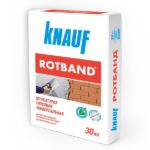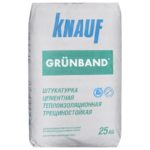Strobes are an integral part of the hidden wiring. These are special channels (trenches) made on the webs and walls, in which electrical cables are laid. After the completion of the installation work, the grooves in the walls must be repaired with a hardening, non-combustible mixture.
Features of laying strobes for electrical wiring
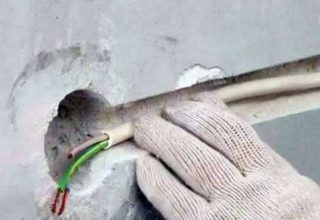
Different material behaves differently when chasing. Most of the difficulties arise when making strobes in concrete walls, in this case, chasing chasers and perforators are used. If we are talking about a brick wall, you can do without hollowing out a trench, the cables are attached to the wall with dowels.
If it is required to pre-place the wiring in a metal casing, horizontal gouging of the channels is carried out using a grinder or chisel. Brick walls, if they are crushed, then along the seam. This is due to the fact that cement mortar is more pliable and softer than brick.
Basic rules and features of chasing:
- The depth of vertical trenches should not exceed 1/3 of the wall thickness.
- Deepening is carried out strictly horizontally or strictly vertically, slopes are permissible only if there are uneven slabs of the house.
- The depth of the horizontal grooves should not be more than 1/6 of the ceiling thickness.
Shtrobing load-bearing walls is strictly prohibited.
How to patch up the grooves in the wall with electrical wiring
To determine the best way to close up the grooves after laying the wiring, you need to familiarize yourself with the features of work in walls made of different materials. Sealing holes requires a spray gun, mortar mixing tank, trowel, brush and spatula.
Concrete
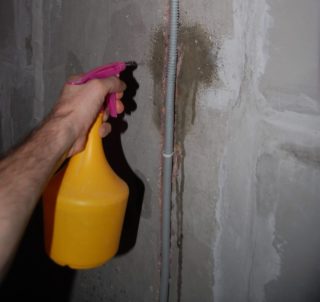
Before starting to seal the grooves, you need to abundantly moisten the hole itself and the place around it with clean water using the following working equipment:
- a piece of foam rubber or a sponge;
- spray;
- wide brush with synthetic bristles.
The trenches are pre-primed and after that they are sealed with a building mixture. It is applied with a spatula with wide strokes crosswise. After the substance has hardened, the excess is removed from the iron with a spatula. Movements should be smooth and stroking. After complete drying, the surface is putty.
Brick
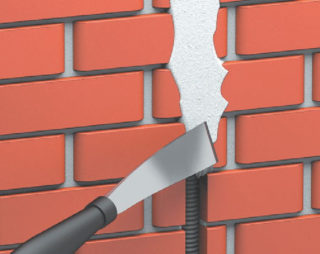
Work in brick walls is accompanied by a lot of dust. Before starting to seal the grooves, you need to remove the dust and treat the working surface with clean water.
It is recommended to seal the furrows with alabaster or plaster mortar. If the groove is deep, it is permissible to use small pieces of stones soaked in mortar. Further, the remaining voids are carefully filled with mortar using a trowel.
Monolithic wall
Work in this case is similar to work in a wall made of concrete, aerated concrete. The recess is filled with a viscous putty. The solution fills the cavity as tightly as possible.
If necessary, the building mixture is applied in several passes. After complete drying, the surface is leveled with a spatula.
Materials for covering strobes
Before covering the grooves for the wiring, you need to choose the right material:
- Gypsum plaster.It is used in rooms with high humidity, the time of complete drying is 24-26 hours.
- Plaster mix based on cement and sand.
- Ready mixes such as Volma, Osnovit and Rotband.
- Gypsum glue such as Perlfix.
It is important that the wire is intact and not insulated in several places. It is strongly not recommended to use polyurethane foam or sealants to seal the holes.
Tools and materials
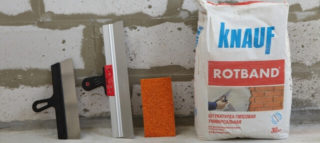
Before starting construction work, you need to make sure that you have all the necessary working arsenal at hand, including building materials. For the correct filling of trenches, you will need:
- Tank for mixing the solution.
- Several metal spatulas 10-15 cm wide and about 120 cm wide.
- A brush that fits the groove.
- Plaster of paris or alabaster, designed to securely fix the wiring.
If the room is characterized by high humidity, it is additionally recommended to purchase gypsum plaster.
Preparatory work
Preparatory work includes disconnecting the power supply and checking the absence of voltage. As much dust and dirt as possible is removed from the finished grooves and treated with clean water and a primer. To do this, use a sponge, spray bottle and brush. It is necessary to process even the most difficult-to-reach places.
The work is characterized by increased danger, therefore it is recommended to purchase protective goggles and gloves.
Main process steps
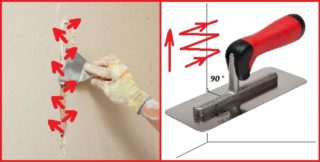
After completing the preparatory work, check that the wiring placed in the grooves does not protrude beyond the vertical / horizontal surface. In places where the wire is not sunk enough, you need to re-walk with a construction tool.
Sealing is carried out using the following technology:
- Dilute the mortar according to the instructions in the enclosed instructions for use. It is better to cook it in portions, since the substance quickly solidifies. Apply to the surface at the point of fixation.
- After the gypsum has hardened and securely holds the wiring, the plaster is kneaded. Each of its varieties has its own limit of layer thickness. If a layer with a thickness of more than 500 mm is required, the process is carried out in several stages.
- A viscous mixture is applied with a small spatula perpendicular to the groove and the cable. It is sealed and leveled until the sealed groove matches the wall surface.
- If homeowners continue to paint the surfaces, the sealed areas are additionally treated with fiberglass strips, reinforcing tape, building bandage or serpyanka. Another layer of plaster is applied on top, this is important to consider when leveling the surface.
- After all layers have dried well, you can start re-priming the surface. If the plaster shrinks slightly, do not worry, this is a normal process.
The final stage of all work is the final putty work to level horizontal and vertical surfaces. If further it is planned to apply ceramic tiles to the walls, finishing work is not necessary.


